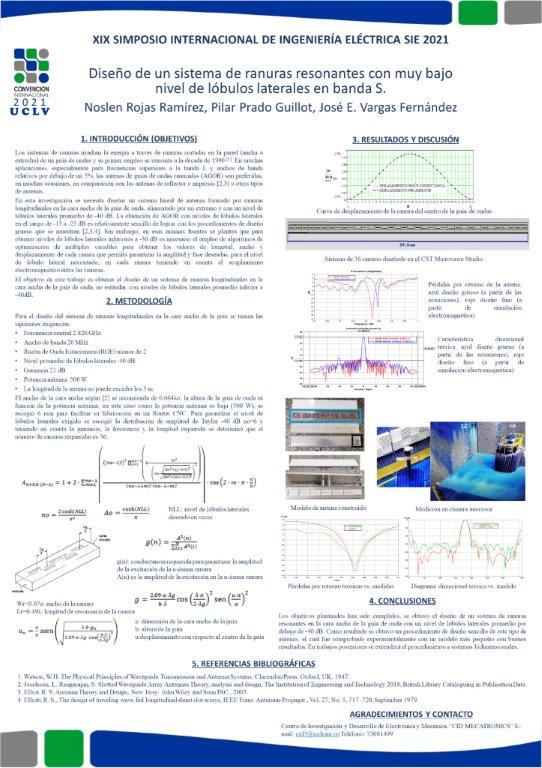Executive Secretary

19th International Symposium of Electrical Engineering
SIE 2021

Abstract
In the present work, the design of a 36-slot system on the wide face of the waveguide is exposed. The dimensions of the waveguide were chosen 71x6 mm (non-standard), with the aim of facilitating its manufacture on a CNC milling machine. To ensure the very low sidelobe level desired, a Chebyshev distribution of -40 dB is used. The design was made in two parts: coarse design and fine design. In the coarse design, the length and width that guarantee the resonance of the slot for the non-standard waveguide were calculated and from this result, the position of each slot on the wide face of the waveguide was determined to guarantee the distribution of chosen amplitude and phase. All slots have the same dimensions and are evenly spaced. From the results of the coarse design, the fine design was carried out with computational modeling in the CST Microwave Studio program, obtaining a system of slots of 2.9 meters in length in S band, with a maximum level of side lobes of -38 dB, which is considered to have a good correspondence with the desired side lobe level (-40 dB).
Resumen
En el presente trabajo se expone el diseño de un sistema de 36 ranuras sobre la cara ancha de la guía de onda. Las dimensiones de la guía de onda se escogieron de 71x6 mm (no estándar), con el objetivo de facilitar su fabricación en una máquina de fresado CNC. Para garantizar el muy bajo nivel de lóbulos laterales deseado se emplea una distribución de Chebyshev de -40 dB. El diseño se realizó en dos partes: diseño grueso y diseño fino. En el diseño grueso se calcularon la longitud y ancho que garantizan la resonancia de la ranura para la guía de onda no estándar y a partir de este resultado se determinó la posición de cada ranura en la cara ancha de la guía de onda para garantizar la distribución de amplitud y fase escogida. Todas las ranuras tienen las mismas dimensiones y están equiespaciadas longitudinalmente. A partir de los resultados del diseño grueso se realizó el diseño fino con la modelación computacional en el programa CST Microwave Studio, obteniéndose un sistema de ranuras de 2.9 metros de longitud en banda S, con un nivel máximo de lóbulos laterales de -38 dB, el cual se considera que presenta buena correspondencia con el nivel de lóbulos laterales deseado (-40 dB).
About The Speaker

Noslen Rojas Ramírez










